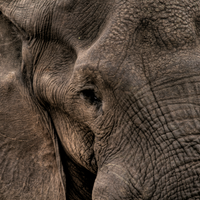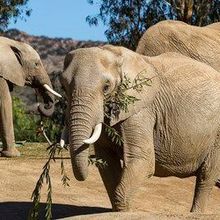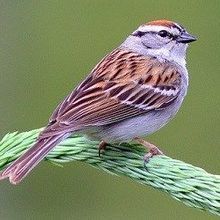Login
Subscribeelephant

Woolly Mammoth Genomes Reveal Genetic Adaptations to Cold
Hannah Thomasy, PhD | Dec 12, 2022 | 2 min read
Researchers identified mutations in genes that may be involved in fat regulation, fur growth, and morphology.

Paleoanthropologist Richard Leakey Dies at Age 77
Chloe Tenn | Jan 3, 2022 | 3 min read
The Kenyan fossil finder is known for his discoveries of various Stone Age artifacts and ancient human skulls and skeletons.

Mass Elephant Die-Off Caused by Cyanobacteria, Officials Say
Max Kozlov | Sep 23, 2020 | 2 min read
Tests point to a toxic algal bloom that might have led to the unprecedented deaths of hundreds of African elephants in Botswana earlier this year, but the evidence isn’t conclusive.

Image of the Day: Safety in Numbers
Chia-Yi Hou | Jul 22, 2019 | 1 min read
Male Asian elephants are forming long-term, all-male groups to forage in agricultural areas of India.

Image of the Day: The Night Life
Chia-Yi Hou | Apr 9, 2019 | 1 min read
Researchers use thermal cameras to count orangutans in Malaysian Borneo.

Image of the Day: Swish Swish
Kerry Grens | Oct 16, 2018 | 1 min read
Animals’ tails swat away insects using both wind and whack.

Image of the Day: Cracked Skin
Jef Akst | Oct 9, 2018 | 1 min read
Micrometer-scale fractures in elephant skin results from the way the epidermis grows.

Elephants Revived a “Zombie” Gene that May Fend Off Cancer
Kerry Grens | Aug 15, 2018 | 1 min read
DNA damage kick-starts what was once a defunct duplicated gene, which kills off injured cells.

Image of the Day: Elephant Twins
The Scientist and The Scientist Staff | Apr 16, 2018 | 1 min read
A pair of calves was born about eight months ago in Tanzania’s Tarangire National Park.

Extinct and Living Elephants’ Genomic History Sequenced
Jim Daley | Feb 26, 2018 | 2 min read
Gene flow between elephant species was a common feature of their evolutionary history.

Image of the Day: Elephants at Sunset
The Scientist and The Scientist Staff | Jan 11, 2018 | 1 min read
Conflict threatens already at-risk wildlife populations and conservation efforts in war-torn areas.

China Vows to End Commercial Ivory Trade
Joshua A. Krisch | Jan 3, 2017 | 1 min read
Conservationists declare victory as the country agrees to crack down on domestic ivory sales, which have contributed to the near-extinction of elephant species.

Elephant Footprints Create Habitat for Tiny Aquatic Creatures
Catherine Offord | Dec 1, 2016 | 4 min read
Researchers discover diverse communities of invertebrates inhabiting the water-filled tracks of elephants in Uganda.

A Plague on Pachyderms
Jef Akst | Jun 1, 2015 | 4 min read
At least seven species of herpesvirus commonly infect elephants. At zoos, keepers scramble to save calves, who are particularly vulnerable to the viruses.

TS Live: Elephant Herpes
Jef Akst | May 31, 2015 | 1 min read
Researchers at the Smithsonian National Zoological Park in Washington, D.C., are studying a viral infection that can be lethal to elephant calves.

Discerning Elephants
Rina Shaikh-Lesko | Mar 12, 2014 | 1 min read
Elephants are able to tell human voices apart based on cues for age, sex, and ethnic group.

Behavior Brief
Rina Shaikh-Lesko | Feb 27, 2014 | 4 min read
A round-up of recent discoveries in behavior research

On Point
Abby Olena, PhD | Oct 11, 2013 | 2 min read
Researchers demonstrate that elephants can use human pointing cues to find hidden food.
Good Vibrations
Cristina Luiggi | Sep 1, 2012 | 4 min read
Researchers are learning how species from across the animal kingdom use seismic signals to mate, hunt, solve territorial disputes, and much more.
